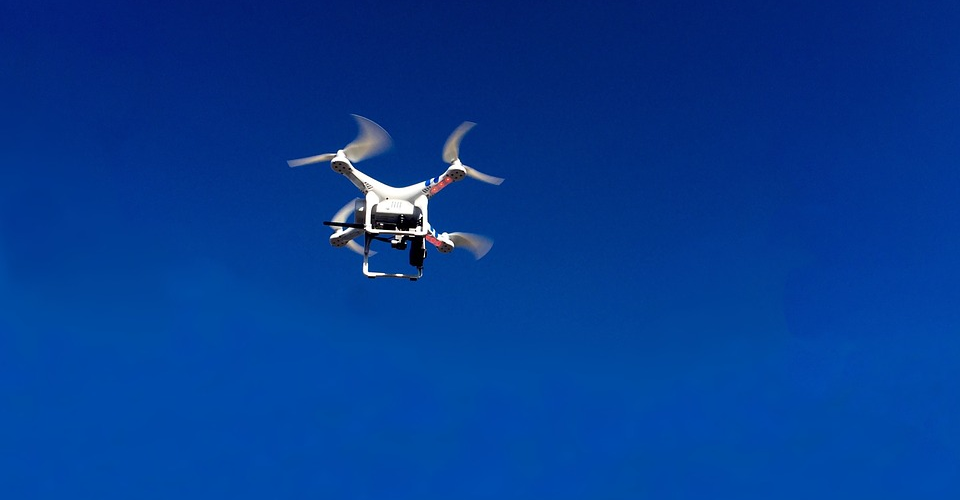What are the Part 107 Rules and Regulations?
Implemented by the FAA three years ago, the Part 107 rules have served as the standard for commercial drone flight operations. This was done to keep national airspace safe in light of a rapidly growing industry for commercial drone flight services. Aside from the wide scope of the Part 107 rules and limitations, the rules are also in a constant state of flux and development, making it a somewhat confusing matter for drone pilots.
In this article, we discuss all the rules and regulations under Part 107 with as much detail as possible. We have also included recent developments to keep your knowledge of relevant legislation updated.
What is Part 107?
“Part 107” is short-hand for the Part 107 of Chapter 14 of the Code of Federal Regulations. Known as the Small UAS Rule, the Part 107 set of rules was the first piece of legislation made specifically for commercial drone use. Initially, Part 107 was formulated to allow drone pilots without a Section 333 exemption to fly their drones commercially. In more recent months, the FAA has made it clear that the Part 107 rules will set the new standard for commercial drone flight.
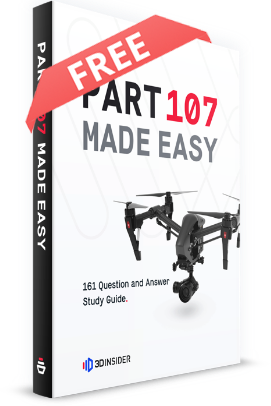
PART 107 Made Easy
- 161 Question and Answer Study Guide
- 105 pages of illustrated content
- Covers all parts of the Part 107 test
- $97 of value for free
Drone registration
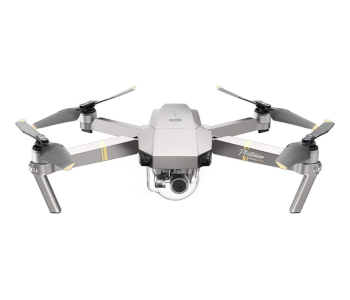
Although not explicitly stated as one of the provisions under Part 107, the requirement to have your drones registered with the FAA was recently reinforced by the National Defense Authorization Act of 2018. This requirement includes all drones that weigh between 0.55 and 55 lbs., whether they are used commercially or recreationally.
To register your drone, you only need to be at least 13 years of age, have an email address, and pay the $5 registration fee. All steps can be done online through the FAA’s DroneZone portal. After registration, you should receive a unique drone registration number which you’ll need to mark all your drones with.
More recently, the FAA has enforced a minor change to the marking requirements for registered drones. Drone pilots are no longer allowed to indicate their registration numbers in a drone’s internal compartments. Instead, the registration number must be somewhere on the external surface of a drone’s body which will be easily visible upon inspection.
This change was done for the welfare of law enforcers and first responders who may have to respond to cases of unidentified drones. By having the registration numbers easily visible, there will be less risk of setting off potential hidden explosives in the drones’ inner compartments.
Certification requirements
A major provision under the Part 107 rules is for drone pilots to secure a remote pilot certificate before they can fly commercially. More commonly known as the Part 107 “drone license,” it will only be granted to drone pilots who have passed a 60-item multiple choice Part 107 knowledge test. This ensures that all licensed drone pilots are equipped with a standard level of knowledge, allowing them to fly their drones without compromising the safety of national airspace.
Much has been written about how to best prepare for the Part 107 knowledge test. There are paid training courses, sample exams, study guides, instructional videos, and podcasts that anyone can use to help them prepare. In any case, passing the Part 107 knowledge test takes considerable time and effort – we suggest spending at least 15 to 20 hours of focused studying to improve your chances.
The Part 107 knowledge test can be taken in any of the almost 700 FAA-authorized testing centers all over the country. All you need to take the test is to be at least 16 years of age, have a valid government-issued ID, be in a physical and mental state fit to fly a drone, and be able to read, write, speak, and understand English. Upon signing up for the test, you need to pay the $150 testing fee.
Once you have managed to answer 70% of the questions correctly, then congratulations! You just need to apply for the remote pilot certificate through the FAA’s Integrated Airman Certification and Rating system. You will have to go through a TSA background check which can take between a few weeks to a few months to finish, but all you need to do at this point is to wait. You should receive a temporary certificate soon enough, while the permanent certificate should follow shortly.
Take note that the Part 107 drone license is only valid for two years, after which you’ll need to renew the license by passing a recurrent knowledge test. Being a licensed drone pilot also means complying with all the Part 107 rules and regulations, as we shall discuss below.
Presenting the certificate to authority
Current Part 107 rules are unclear on which authority figures have the right to ask you to present your remote pilot certificate. However, the rules require licensed drone pilots to have their remote pilot certificates with them whenever they conduct commercial drone operations.
The FAA has recently proposed changes to the Part 107 rules that will shed some light on this matter. Under the proposed rules, you can be required to present your certificate by the following authority figures:
- Representatives of the FAA
- Representatives of the National Transport Safety Board (NTSB)
- Any federal, state, or local law enforcer
- Representatives of the Transportation Safety Administration (TSA)
Drone weight limit
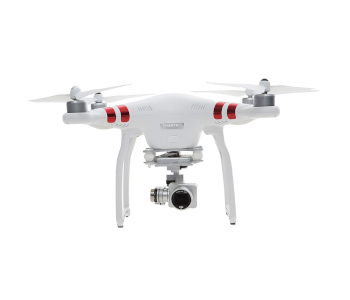
With a Part 107 license, you are only allowed to fly a drone up to a weight limit of 55 lbs. including the payload. This weight limit should be high enough to fly most out-of-the-box drones – even the bigger ones such as the DJI Inspire 2 or the Yuneec Typhoon H Plus. However, if you are using a drone for highly specialized applications such as LiDAR surveys, crop dusting, drone mapping, cinematography, or package delivery, then there’s a good chance that you will be going over this limit.
If your drone and payload weigh more than 55 lbs., then you have two options: to fly recreationally or to get a Section 333 exemption. However, it’s very unlikely that you’ll be flying such a heavy drone for fun. One thing you need to know about getting a Section 333 exemption is that it’s much more tedious than Part 107. You’ll need an airman’s certificate with a recreational level certification, a medical certificate issued by the FAA, and up to 6 months of waiting time for your application to be processed.
Maximum groundspeed
Under Part 107 rules, a drone can only be flown at a maximum ground speed of 87 knots or 100 miles per hour. There aren’t many drones that can fly at this speed, so this is one of the simplest rules to comply with.
Airspace classifications
Now we’re talking. A knowledge of airspace classifications and knowing where you can and cannot fly is one of the most critical as a commercial drone pilot. By default, all national airspace – including everything above your backyard – is under the authority of the FAA. There are a few exceptions for areas that are being used for military operations and exercises.
Regulatory airspace refers to those under the authority of the FAA. Under this category are two sub-categories: controlled and uncontrolled airspace. Controlled airspace refers to the areas near airports as well as the cruising altitude for commercial airline operations. Depending on the size of the airport, controlled airspace can be identified as either Class B, Class C, or Class D airspace.
Each type of controlled airspace has different areas of coverage – the extent of controlled airspace of a major airport is larger than that of a smaller airport. In any case, you will need to secure permission from air traffic control (ATC) before you can fly a drone in controlled airspace. The sole exception is Class E airspace, which covers all controlled airspace that is not within the domain of all the other airspace categories. In most cases, a drone pilot with a Part 107 license can fly their drones in Class E airspace even without ATC permission.
Uncontrolled airspace, known as either Class F or Class G airspace, is basically the playground of drone pilots. As long as you are not near an airport, uncontrolled airspace extends from the ground up to the base of the overlying Class E airspace. This is commonly at around 700 feet, far above the 400-foot altitude limit imposed by the Part 107 rules (which we shall discuss later).
Air traffic in uncontrolled airspace is outside the authority of the FAA, so you won’t need to ask for permission from the FAA or even an ATC. Although uncontrolled airspace is outside the authority of the FAA, their regulations still apply. This means that you still need to fly within the Part 107 restrictions and any other local drone flight laws.
Special use airspace include areas where control of the airspace is under another authority, such as the military. There are several reasons for declaring airspace under special use restrictions, the most common of which involve military operations and exercises, search and rescue operations, disaster response, and national security matters. Flight in special use airspace is not always restricted, although we recommend coordinating with the relevant authority, so you’ll be aware of the inherent hazards of flying in an area with unusual air traffic.
Maximum altitude
All drone operations, including both commercial and recreational, must be restricted to within 400 feet above ground level (AGL). This rule has been ingrained among the drone flight community that many modern drones have even integrated this limitation in their drones’ firmware. The Part 107 rules explicitly state that “the maximum allowable altitude is 400 feet above the ground, or higher if your drone remains 400 feet of a structure.”
Based on how the restriction was stated, there may be times when you can take off from a higher altitude. For instance, you can bring your drone along on a hiking trip and launch it from the peak of a mountain. This means that the 400-foot limit will be measured from the point where the drone was launched. Technically, this will put you at more than 400 feet from sea level but still within 400 feet from above ground level. This is perfectly fine – after all, there won’t be any aircraft hovering near that mountain peak.
Flight during daytime
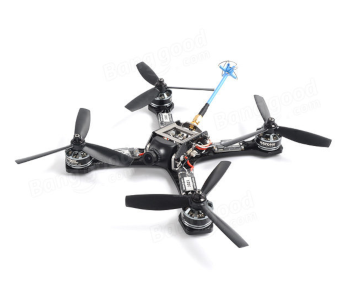
Part 107-licensed drone pilots are only allowed to fly their drones at daytime. Flight during twilight, defined as either 30 minutes before sunrise or 30 minutes after sunset, can only be done with a drone that is outfitted with appropriate anti-collision lighting. The FAA defines appropriate anti-collision lighting as lighting implements that are still visible within 3 statute miles.
The restriction against flying at night has been one of the more controversial provisions of Part 107 ever since it was implemented. Not only does it prevent commercial drone pilots from accepting jobs that need be done after dark but flying a drone at night is one of the most fun things that you can do with your drone. That’s why it’s hardly a surprise that the FAA has received thousands of requests for a waiver for this particular stipulation.
Thankfully, the FAA has been receptive to the response of the drone community against the restriction for night flight. Earlier this year, the FAA has proposed changes to the Part 107 rules. One of these changes will allow drone pilots to fly at night without asking for a waiver as long their drones are equipped with the appropriate anti-collision lighting accessories.
However, the proposed change comes with a major caveat: in place of the waiver, the FAA recommends that drone pilots undergo training or take an updated knowledge test that will affirm their ability to fly their drones at night. According to the FAA, this new training or testing requirement will focus on “night physiology and night illusions.” It’s still unclear how these changes will be implemented, or even when they will take effect. We think it’s safe to say that it won’t be anytime soon.
Flight over people
According to Section 107.39, a drone pilot may not fly a drone over another human being unless that person is either “directly participating in the operation of the small unmanned aircraft” or “located under a covered structure or a stationary vehicle that can provide reasonable protection from a falling small unmanned aircraft.”
Although the rule seems pretty cut and dry, there are actually a lot of intricacies behind this particular restriction. The rule outright states that a drone can only fly above someone who is “participating” in the activity and not someone who is “consenting.” Thus, you cannot fly a drone over a bystander, even if that person has given their permission for you to do so. According to the FAA, this restriction was put in place as non-participating people do not have the same level of situational awareness as the pilot-in-charge and the visual observers.
The scope of the drone flying “over a human being” is also not as simple as it looks. The rule might read like it means that only flying overhead is prohibited, but the FAA states that a drone pilot must consider how the speed and trajectory of a drone could affect the area of damage should it crash. It’s a reasonable addendum to the rule, albeit one that isn’t easy to comply with.
You will also notice that the rule about flying over vehicles outright states that the vehicle should be stationary. This stipulation was added since a drone-related accident involving a moving vehicle would result in much more damage and the threat of personal injury.
There’s good news, though. The changes proposed by the FAA to Part 107 rules also touch upon the restrictions against flying over people. Specifically, there is a chance that you can be allowed to fly your drone over people if your drone can be proven to be safe enough for this type of flight. However, the responsibility of proving this degree of safety falls mainly to the drone manufacturer.
Under the proposed changes, drones will be classified into three categories. Category 1 drones are those that weigh below 0.55 lbs. and are automatically cleared for flight over people. Category 2 drones weigh more than 0.55 lbs. but should not have any exposed rotating parts that can cause skin laceration injuries or any other FAA-identified safety defect. Lastly, Category 3 drones are quite similar to Category 2 drones but belong to higher accident severity threshold.
Since Category 3 drones present a higher risk for injury, they cannot be operated over open-air assemblies of multiple people and must be kept on a constant state of transit when flying over people.
This proposed change will make this rule a little more complex than what it originally was. It will require drone manufacturers to assert which safety thresholds their drones should be classified in. The FAA will also be responsible for maintaining a showing which drone models belong to each safety category. This sounds like a lot of work, which is why we don’t expect this proposed change to roll out anytime soon.
Flight from a moving vehicle

According to Section 107.25, “No person may operate a small unmanned aircraft system from (a) a moving aircraft or (b) from a moving land or water-borne vehicle unless the unmanned aircraft is flown over a sparsely populated area as is not transporting another person’s property for compensation or hire.” The rule doesn’t say much, but we can break down the statements to better comprehend its intention.
Drone flight from a moving aircraft is outright prohibited without any concession. This seems reasonable, as it can be very hard to maintain visual contact with a drone if you are inside a moving aircraft. Moreover, a drone and a manned aircraft flying so close to each other is something that the FAA is deliberately trying to avoid, thus the Part 107 airspace restrictions. An aircraft-related accident is downright disastrous and will likely result in loss of life.
The next item states that flying a drone from a moving vehicle in land or water is prohibited unless the flight is done over a sparsely populated area. The term “sparsely populated” is quite ambiguous – currently, the FAA is only assessing if an area is classified as sparsely populated on a case-per-case basis. This leaves commercial drone pilots in a position of uncertainty on whether they can fly over an area or not. Your best bet, if you really must fly from a moving vehicle, is to pick an area that is barely populated. Open bodies of water are also fair game, as long as you’re not flying over a populated dock or a waterpark.
Visual line-of-sight requirements
According to Section 107.31, the remote pilot-in-command or a visual observer should always maintain visual line-of-sight contact with the drone. The objective behind this rule is for the pilot or visual observer to know, at all times, the drone’s location, attitude, and direction of flight. Any potential airspace traffic or hazards or any risk of the drone endangering life or property must also be visible to the pilot or visual observer. Visual line-of-sight must be maintained without using any vision-enhancing device.
If the pilot-in-command is unable to maintain visual contact with the drone, such as when flying with FPV goggles, then a visual observer is required for safe operations. There is no limit to how many visual observers can be employed in a single flight mission. However, the pilot and the visual observer must always be able to communicate well with each other. There is no restriction to how this can be done. The pilot-visual observer pair can communicate through walkie-talkies, although due caution must also be practiced regarding how the use of additional devices could be a distraction for the pilot.
A visual observer is also expected to be well-versed with the Part 107 rules and regulations to better direct the pilot-in-command away from possible violations. They must also be familiar with the potential airborne and ground hazards and know the flight conditions that are deemed unsafe for drone flight.
Operation of multiple drones
The rule to maintain visual line-of-sight also ties into the rule restricting a pilot or visual observer from being responsible for more than one drone at a time. According to Section 107.35, “a person may not operate or act as a remote pilot or visual observer in the operation of more than one unmanned aircraft at the same time.”
Commonly called a swarm operation, the FAA asserts that flying multiple drones is a concentration-intensive activity that should be limited. By decreasing the amount of attention that a pilot or visual observer pays to each drone, the risk of the particular drone flight mission to the national airspace is increased.
Reporting requirements
Section 107.9 is no longer concerned with drone flight but rather with reporting any drone-related accidents that you are a party to. According to the rule, “A remote PIC must report an accident to the FAA within 10 calendar days” if the accident resulted in serious injury to a person or any property damage amounting to $500 or more.
The report can be submitted to the FAA Regional Operations Center nearest to you or online through the FAA UAS website. The report needs to include the name and contact details of the pilot-in-command, the pilot’s certificate number, the registration number of the drone that was involved, the location, date, and time of the accident, a description of what happened, and details on the personal injury or property damage that was the result of the accident.
Depending on the severity of the accident, a report might also have to be submitted to the National Transport Safety Board (NTSB).
Waiver requirements
The FAA recognizes that there are certain commercial drone applications that cannot be done in compliance with all the Part 107 rules and restrictions. For this reason, Part 107 also specifies the provisions that the FAA can waive at their discretion. These restrictions include:
- Drone operations at night
- Operation of multiple drones by a single pilot
- Operations over a populated area
- Operations beyond visual line-of-sight
- Operation from a moving vehicle
- Operation beyond the prescribed operational limits
Applying for a waiver can be done through the FAA’s DroneZone portal. It’s a very tedious process that will require you to provide details on your planned operations (purpose, location, date, time), the drone model you are using, the qualifications and expertise of the remote pilot-in-command, any potential hazards of the mission, and how you intend to mitigate these hazards.
Approval of the waiver can take up to 90 days, largely depending on the complexity of the request and the how much backlog the FAA has for waiver requests. During the approval process, the FAA can also get in touch with the requesting party to ask for additional details about the planned drone operations.
Of the more than 2,000 waiver applications that the FAA has granted as of September 2018, 90% of them were for drone flight at night. The next highest figure was for drone flight in restricted airspace, which accounts for about 5% of the granted waivers. There were also multiple waiver requests for flight beyond visual line-of-sight, operations over populated areas, operations from a moving vehicle, and operations of multiple drones at the same time.
The FAA has recognized that even with the high number of waiver requests for drone flight at night, there was not a single reported drone-related accident due to the granting of this waiver. This served as the stimulus for the changes proposed by the FAA for relaxed restrictions for drone flight at night. Similarly, technological improvements in modern drones have also prompted the FAA to propose for more relaxed rules on drone operations over people.
The FAA has also proposed to expand the conditions for which they can grant waivers for. The expanded list includes drone flight over moving vehicles and drone flight at night without anti-collision lighting.
Final thoughts
We can foresee that the Part 107 rules will remain as the most relevant piece of legislation for commercial drone pilots in the next several years. They are also due to receive much-needed updates since they were implemented around three years ago. Fortunately for drone pilots, the upcoming changes seem geared towards making drone flight less restrictive for commercial drone pilots. This speaks well of the willingness of the FAA to listen to feedback from the drone community and to leverage on the lessons learned from previous years of implementation to come up with a more practical set of regulations.

